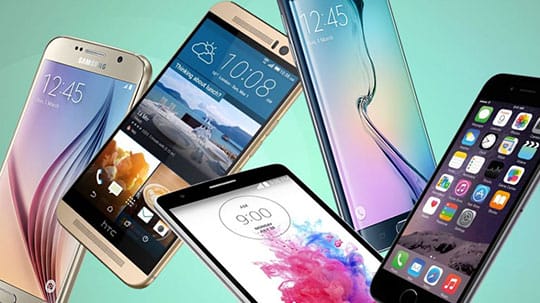top 10 qmobile smartphones
AT&T used to as well, but they have a plan known as Mobile Share Advantage that doesn’t include such charges (though your data speeds will take a hit). T-Mobile is the cheapest of the major carriers and doesn’t have overage charges. Instead, the Un-carrier reduces your speed after you’ve exceeded your limit. Sprint doesn’t charge overages, either. Don’t worry, though, because we’ve crunched all the numbers.

Check out our best cell phone plan guide. Network: It’s also important to consider what kind of coverage can you expect from each carrier. Verizon and AT&T have the best coverage, though T-Mobile and Sprint aren’t far behind.
Buy Smartphone and get coupon. Reed more
T-Mobile and Sprint are known for shortcomings in rural areas but excel in cities. Phone selection: It’s very difficult to buy a phone from one carrier and take it to another (unless it’s an iPhone). AT&T has the largest selection of phones, though all four have the big-name devices from Samsung, Apple, LG, HTC, and others.
Step-By-Step Speedy Systems Of smartphone top 10 qmobile smartphones
AT&T Sprint T-Mobile Verizon Re phones and plans Do you need a large screen and a high-end camera? Do you need the latest operating system? Decide beforehand what matters most. Then, reference our best smartphones list to find which phone and carrier is best for you. Sprint, T-Mobile, and Verizon are now willing to pay your early termination fee or part of your remaining phone payment balance when you switch networks (check each provider’s website for details). Before switching, it’s always good to reread your current phone plan and compare it to your desired plan.

top 10 qmobile smartphones - Comparing Swift Advice In smartphone
Now that two-year contract plans are dead, you’ll have to pick a monthly phone installment plan. Previously, when you had a two-year contract plan, you’d pay a one-time subsidized fee, and then the phone would be all yours. For example, the iPhone used to cost you a $200 down-payment on two-year plans with AT&T and Verizon before contracts were phased out. That’s over $500 less than the non-contract price.
Now, you don’t have that option if you get a plan. Here’s how your monthly payment plan will work: No contract monthly payments: All the major carriers offer plans that require little or no up-front payment. Instead, you’ll pay off the full price of your phone over 24 months. Pros: Nearly $0 due upfront (you’ll still have to pay the taxes when you sign), no two-year contract, no additional cost to upgrade, smaller device fee. Cons: You have to pay the full price of your phone.
Some carriers, like Sprint, also offer leasing programs, where you pay less than the whole amount of the phone you’re leasing over the course of 12 months and get an immediate upgrade to a phone when it comes out. The leasing program is for iPhone lovers who need the latest and greatest iPhone each year, but Sprint also offers the same plan for other smartphones from Samsung and other big-name devices. Learn more about the different leasing programs offered by T-Mobile, Verizon, and AT&T by following the links. Get a quote from service provider Receiving a quote takes minutes.
You can get quoted on each carrier’s webpage by simply shopping for a phone. When you select a phone a menu will appear outlining the prices of different service plans. They’ll give you a monthly estimate, but be sure to read the fine print about overage charges and other hidden fees.
If you’re not sure which plan is right for you, take a look at our picks for the best cheap plans available.

No comments:
Post a Comment